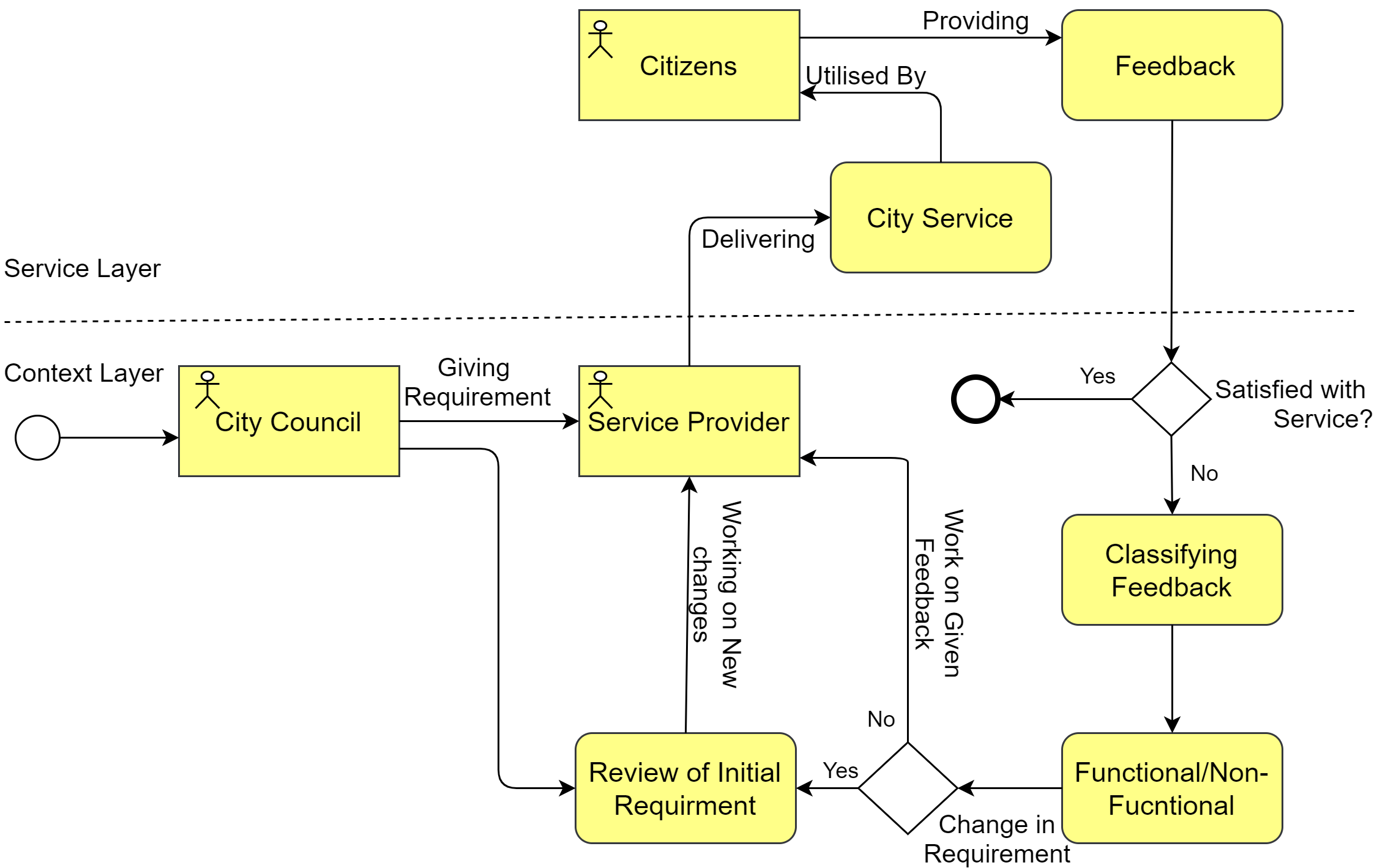Citizens Feedback in Service Design

Smart cities often do not optimally reach their goals if the end-users, the citizens, are not involved in their design (Johannes and Snoeck, 2019). Often-times, smart cities do not reach their objectives because citizens were not appropriately involved while defining its core elements (Dameri and Rosenthal-sabroux, 2014). Technology alone cannot transform a city, a socio-technical perception is needed when organizations embark on smart initiatives to address new challenges for enterprises and service providers (Ekman, Röndell and Yang, 2019; Bednar and Welch, 2019). Though, smart city services are driven by advanced information technologies, their accomplishment is highly dependent on user engagement, which is traditionally problematic (Peng, Nunes and Zheng, 2017). Therefore, it is important to consider citizen’s inputs from the service layer, and include them in the context layer while defining the requirement of the services as it would lead to improved quality of the services for the citizens of the city who are also the end users of the services.
The process to ensure that citizens input from the service layers is considered while defining the requirement of the services in the context layer are defined as follows:

Activities
- Identify Stakeholders: Identify each stakeholder from three perspectives, firstly from the city council side, secondly from service provider’s viewpoint, and thirdly the target group of people for whom service is being designed.
- Define Level of Citizen Engagement: Level of engagement should be defined at two level, for instance at initial stage before designing the services and then later after deploying the services.
- Classify the Feedback: Citizen’s feedback as an input for the requirement of the service design can further be classified in two types of requirements such as functional and non-functional for the further improvement of the services.
- Review of the Initial Requirement: After the classification of the feedback, review of the initial requirement is required between council and the service provider to make further improvement to the services.
- Incorporating New Changes: Once initial requirements have been reviews and approved with mutual discussion between all the stakeholder, new suggested changes should be incorporated by the service providers.
Template
This Template represent the relationship between business process and entities.
Business Services and Information Diagram available to download
References
- Bednar, P. M. and Welch, C. (2019) ‘Socio-Technical Perspectives on Smart Working: Creating Meaningful and Sustainable Systems’, Information Systems Frontiers. doi: 10.1007/s10796-019-09921-1.
- Dameri, R. P. and Rosenthal-sabroux, C. (2014) ‘Smart City and Value Creation’, in, pp. 1–12. doi: 10.1007/978-3-319-06160-3.
- Ekman, P., Röndell, J. and Yang, Y. (2019) ‘Exploring smart cities and market transformations from a service-dominant logic perspective’, Sustainable Cities and Society. Elsevier, 51(February), p. 101731. doi: 10.1016/j.scs.2019.101731.
- Johannes, A. and Snoeck, M. (2019) ‘Hearing the Voice of Citizens in Smart City Design : The CitiVoice Framework’, 61(6), pp. 665–678. doi: 10.1007/s12599-018-0547-z.
- Peng, G. C. A., Nunes, M. B. and Zheng, L. (2017) ‘Impacts of low citizen awareness and usage in smart city services: the case of London’s smart parking system’, Information Systems and e-Business Management. Springer Berlin Heidelberg, 15(4), pp. 845–876. doi: 10.1007/s10257-016-0333-8.